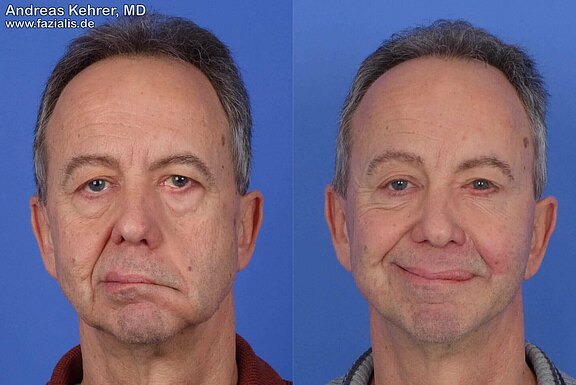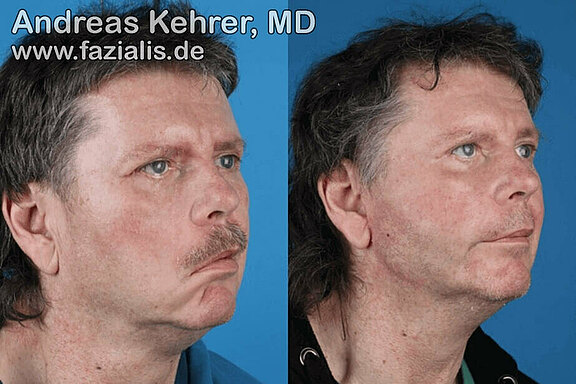Facelift for facial palsy (facial paralysis) and Bell's palsy: face lifting measures are often carried out in parallel with nerve and muscle transplants, as the surgical approach in front of the ear is very similar to a purely aesthetic facelift. Tissue tightening can give the patient a more youthful appearance in addition to functional gains in the eye and mouth complex. The most modern forms of facelift, such as the deep-plane facelift, can also be applied. For example, lifting the corner of the mouth and tightening the cheek tissue can help to regain "oral continence" (i.e. the ability to keep liquid food in the mouth in a controlled manner). The chewed food during food intake and chewing process remains less in the "flabby cheek pocket". In some cases, the cheek tissue without functioning muscles can become so slack that patients have to use their fingers to remove the partially chewed food bolus. Other functions also benefit: the speech is often much clearer after a facelift, which is sometimes combined with additional connective tissue from the thigh (fascia lata), often postoperatively. There are also no more accidental injuries caused by biting open the cheek mucous membrane during chewing, which some patients find extremely disturbing.
Besides other procedures (nerve transfer V-to-VII and 2 nerve grafts, endoscopic elevation of the periorbital complex, lower eyelid reconstruction), this patient received a facelift (high SMAS-facelift on both sides) and a fascia lata suspension plasty on the left side. This makes him look a few years younger in addition to the functional gain as a positive side effect. Sometimes the so-called "sagging cheeks" have disappeared. You can see the functional result of the nerve reconstruction here.
55-year-old patient (before/after photo). Firming measures are often carried out parallel to muscle transplants and are able to give the patient a more youthful appearance in addition to a functional gain in the eye and mouth complex. The raising of the corner of the mouth and tightening of the cheek tissue lead to a recovery of the "oral continence", the ability to keep liquid food in the mouth in a controlled manner. The speech often becomes much clearer postoperatively. After the additional tightening of the tissue during chewing, there are no more accidental injuries caused by biting on the mucous membrane of the inner cheek.

